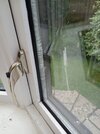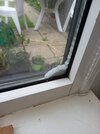These are the large, 500 x 1.5m panes in our conservatory. All of them are the same. They were like this when we moved in 10yrs ago, although they have gotten slightly worse over the years.
They obviously shouldn't be like this. I'm just wondering what would have caused it? Is it over-heating? Or poor product? I've no idea of the manufacturer unfortunately and I dare say after ten years, no recourse to be had anyway.
They obviously shouldn't be like this. I'm just wondering what would have caused it? Is it over-heating? Or poor product? I've no idea of the manufacturer unfortunately and I dare say after ten years, no recourse to be had anyway.





